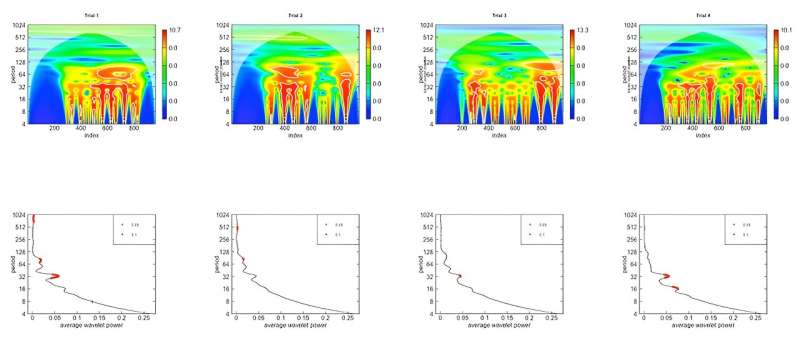November 29, 2023 report
This article has been reviewed according to Science X's editorial process and policies. Editors have highlighted the following attributes while ensuring the content's credibility:
fact-checked
peer-reviewed publication
trusted source
proofread
'Sea firefly' ostracods demonstrate collective synchrony with bioluminescent mating signals

A team of evolutionary biologists and limnologists affiliated with multiple institutions in the U.S. has described the synchronous bioluminescent signals they observed being produced by a type of marine ostracod (Crustacea; Luxorina). In their paper published in the journal Proceedings of the Royal Society B, the group describes their study of the synchronized mating behavior of the tiny creatures.
In 2017, members of the current research team were snorkeling off the waters of Panama when they happened upon a tiny light show displayed in the sea below them. Living in the seagrass were tiny ostracods that were bioluminescing in a way that the researchers had not seen before. Intrigued, they videotaped the behavior of the sand-grain-sized creatures and brought back samples to study in the lab. In so doing, they found an example of bioluminescent mating signaling that had not been documented before.
Taking a closer look at the tiny creatures, the research team found that they looked like tiny shrimp encased in round, see-through cases. The male had a unique organ situated just above the mouth. Watching the males in action, the team found that they exuded two types of mucus from the unique organ that when merged became bioluminescent.
The resulting bioluminescent mucous was then released in a way that the researchers describe as sort of a dance. The tiny creature would swim up out of the grass, then allow itself to fall gracefully back down following a corkscrew path—trailing mucus as it went. The result was reminiscent of a shooting star in slow motion.
But there was more to the story. In watching the colony of ostracods, the research team found that their movements were orchestrated. They would interact with one another as they fell, creating a synchronized light show—presumably for the benefit of the females watching below.
The researchers suggest the entire light show was a mating ritual of a type that has not been seen before. They noted that individuals in the show who were farther apart tended to produce more mucous, perhaps as a ploy to attract attention from a prospective mate. They also found that the characteristics of the light show were highly susceptible to foreign influence—a fish swimming by, for example, could change how it transpired.
More information: Nicholai M. Hensley et al, Collective synchrony of mating signals modulated by ecological cues and social signals in bioluminescent sea fireflies, Proceedings of the Royal Society B: Biological Sciences (2023). DOI: 10.1098/rspb.2023.2311
Journal information: Proceedings of the Royal Society B
© 2023 Science X Network



















